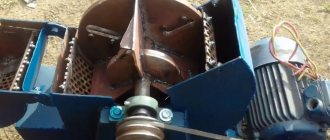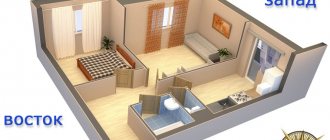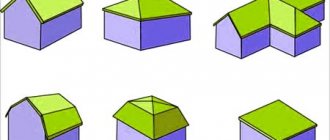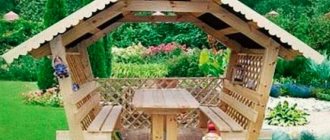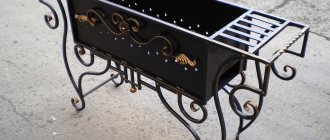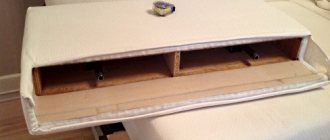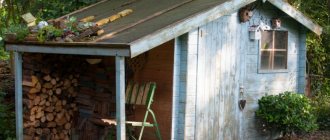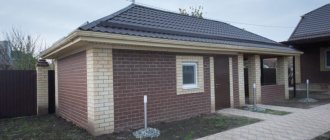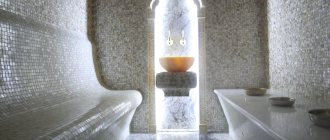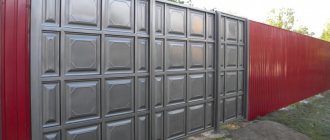When breeding rabbits, one of the main points is the correct place to keep such animals. A spacious and functional rabbitry will preserve the health and productivity of the animal, and will also simplify its care. But not always purchased options are made taking into account all the nuances. They may not be suitable for farm conditions or may be inconvenient for rabbits. The way out of this situation is to build a rabbitry at home.
Rabbit farm for one rabbit
Benefits of raising rabbits
Rabbit breeding today is an extremely popular area of livestock farming. When organizing the proper conditions for keeping and feeding such animals, the breeder has a wide range of advantages that are inherent in rabbit farms.
The main ones among them are:
- obtaining high-quality fur, which is highly valued in clothing production;
- dietary meat, widely used in cooking;
- the possibility of using the manure of such animals to fertilize fields and vegetable gardens;
- caring for animals requires a relatively small amount of time and money;
- Owners also receive a certain income from the sale of young animals.
Features of caring for rabbits
There is a common belief that rabbits are prone to various diseases. And if one individual gets sick, the entire population will inevitably die. Hence the reluctance of farmers to breed rabbits. There is a high risk of losing all animals at once and incurring losses.
Experts believe that proper maintenance of rabbits, together with well-chosen balanced feed, reduces the risk of loss of livestock to zero. When well maintained, these rodents reproduce quickly and grow well.
Having decided to start breeding rabbits, you must first take care of the conditions in which the animals will live. A proper rabbitry should be convenient both for rabbits to live in and for caring for.
Basic requirements for a rabbitry
A properly assembled house is a fundamental point in breeding rabbits. Therefore, before building a rabbitry with your own hands, it is extremely important to familiarize yourself with the basic requirements that are put forward for such a product.
Attention! When constructing cages for rabbits, be sure to plan for what breed, age and sex of animals it is being built for. Such moments certainly affect the main design features and dimensions of the cell.
In addition, there are a number of other important requirements that every rabbitry must meet:
- Maximum space. A sufficient amount of free space in the cage promotes increased physical activity of the animals, which is necessary for their well-being. In addition, the large area of the house will greatly simplify the removal of manure and feed residues, as well as disinfection.
- High quality lighting. The rabbitry should be well lit during the day, regardless of whether it is located indoors or outdoors. A constant supply of light during the day promotes the growth of rabbits and improves their appetite. But in no case should animals be exposed to direct sunlight. They are also harmful. The optimal lighting time for the house is from 16 to 18 hours a day.
- Temperature conditions. The most acceptable temperature in the cage for rabbits is 10–20 degrees. Exceeding this range is fraught with health problems and decreased productivity.
- Ventilation. Organization of ventilation in the rabbitry is required mainly when the house is located indoors. When placed outside there will be enough natural ventilation.
Taking into account the above points, you can move on to more specific cell options.
Ideal place for a rabbitry
Where a convenient rabbitry for the garden will be located is of great importance, so you should think about this in advance. During the day, when the sun is shining brightly, its rays should not directly hit the building area. Therefore, a place in the shade is ideal. In addition, it is very good if the structure is located on a small hill.
Any cool winds should under no circumstances appear near the rabbitry. The same goes for damp or stale air. You must also remember that there should not be a compost pit nearby. Such a neighborhood threatens the extinction of some or absolutely all animals.
It is also recommended to install this building away from various sources of noise, such as an enclosure with dogs and the like.
Types of designs and sizes
When forming a large rabbit farm, three main types of rabbit farms are used. Each of them requires specific dimensions and design features. At the same time, as for the dimensions of each type of cell, they have quite clear values.
Variety of rabbitry
For a couple of rabbits
As a rule, future breeders buy rabbits in pairs, which include an adult male and female. For their accommodation, a cage is set up, divided inside into two rooms. The minimum dimensions of such a product have the following values:
- product length – 140 cm;
- width – about 70 cm;
- cage height – from 50 to 70 cm (depending on the breed of rabbits).
The two sections of the house are separated from each other by a special net, through which the animals are provided with hay and grass. The crumbly feed is poured into feeders, which are securely fixed under the walls of the structure. Drinkers are also installed there.
The simplicity of these structures allows them to be arranged in several tiers. But it should be remembered that with this arrangement, natural ventilation will be sufficient for the upper floors, and artificial ventilation must be organized in the lower cage.
For young animals
The cage for growing young animals has a different design and dimensions. Rabbits are kept in such a home until they are 2 months old, after which they are moved to rabbit hutches for adults.
The area of the product is calculated based on the size of the rabbit population. Each animal requires a minimum of 0.12 square meters. m of space. As for the minimum dimensions of such a rabbitry, they have the following values:
- cell length is from 200 to 300 cm;
- height must be at least 35 cm;
- width – about 100 cm.
For a female with cubs
Rabbit with offspring
The pregnant rabbit is placed in a cage with a separate structure. After lambing, she will live here with the young animals for some time. The calculation of the area for such a family is at least 0.6 square meters. m. Moreover, an integral element of this cage is the nest in which the lambing will take place. It can be made from a wooden box. When organizing a queen cell, a number of points should be taken into account:
- the presence of a small round hole for the free passage of the rabbit;
- the top cover is on door hinges, which will allow you to open it and check the condition of the offspring;
- a thick layer of sawdust or fluff on the floor;
- separate compartment for an infrared lamp in cages installed outdoors.
The dimensions of the nest are approximately as follows:
- length – 35 cm;
- width – 27 cm;
- height – about 30 cm.
Group cage
This cage is used if your rabbits are still very young and less than six months old.
The design of the cage itself is simple and consists of two compartments with a place to sleep and a place where rabbits can eat and bask in the sun.
The food compartment should be kept open so that the rabbits always have fresh air and feel comfortable.
The size of the rabbitry should not be too large; 0.5 meters in height and one meter in length will be enough.
Preparation for construction
Making a rabbitry with your own hands is quite simple even without extensive experience. But the key to the success of such work is careful preparation. It includes several stages.
Create a drawing
Before you make a rabbitry yourself, you need to depict its plan in detail on paper. Such a drawing will greatly simplify the assembly and calculation of the necessary materials. But if the assembler does not have special drawing skills, then the drawing can be downloaded from the Internet. But even in this case, it will have to be modified taking into account specific parameters.
The first thing you should pay attention to when planning is the size of the product, in accordance with the breed and number of rabbits. The following points are taken into account:
- for one young individual allocate from 0.2 to 0.5 square meters. m area;
- for rabbits that are planned to be used in breeding work, from 0.8 to 1 sq. m of space;
- for adult animals in group keeping, from 0.5 to 1 square meter is allocated for each rabbit. m;
- for large breeds of rabbits, the need for space increases even more.
Drawing of a rabbitry
The drawing itself is carried out according to the following scheme:
- Draw a rectangle that shows the exact dimensions of the cell on a scale.
- Future compartments are marked with the same respect for scale.
- Next, feeders, doors and partitions are marked.
- Based on the noted points, a side sectional view is indicated. Moreover, a cut is made along the area with the largest number of parts in order to calculate them more accurately.
Materials
After the detailed plan is ready, the assembler begins to prepare materials. There is a wide choice of materials from which it is possible to build a high-quality rabbitry. But most rabbit breeders agree that thin wood and plywood should not be used. Such raw materials quickly become wet, and when rabbits wear down their teeth, they will render them unusable in a matter of days.
To make the simplest rabbit house you will need:
- Thick wooden beam. Used to assemble the frame.
- Thick board (preferably oak). The back and side walls are made from it.
- Fine grain mesh. Suitable for forming a front wall, as well as a floor.
- Metal or thick wooden slats. This material is used to reinforce the floor.
- Ruberoid and slate. Suitable for building a cage roof.
Nails, screws or other fasteners are also required for the job. And if in winter the cages are kept in an unheated room, additional care should be taken to insulate them.
Tools
Based on the specified materials, the required set of tools is selected. The minimum list includes:
- Bulgarian;
- scissors for cutting metal;
- hammer;
- drill;
- riveter;
- tape measure or long ruler.
Tools for building a rabbitry
For marking, you should select a pencil with a soft core in advance. If the legs of such a product are planned to be made of metal, you will additionally need a welding machine.
Tools and materials
To make a rabbit hutch you will need the most common carpentry tools
To build a rabbitry from wood and various available materials, you need to stock up on:
- wooden beam with a cross-section of at least 60×60 mm;
- planed boards 25–30 mm thick;
- slats with a cross section of at least 25×40 mm;
- plywood, OSB, plexiglass - for walls and partitions;
- polycarbonate, tin, slate, soft tiles or roofing felt - for roofing;
- mesh with cells no more than 40 mm for walls, doors and floors;
- furniture dowels;
- nails and screws;
- door hinges, latches, carrying handles.
In the process of work you will need ordinary carpentry and plumbing tools:
- hammer;
- screwdriver or set of screwdrivers;
- drill with a set of drills;
- hacksaw for wood and metal;
- jigsaw;
- grinder with a disk for woodworking or an angular circular saw;
- chisel;
- roulette;
- carpenter's square;
- bubble level;
- metal scissors.
When building a rabbitry, safety requirements should not be neglected. Be sure to use a protective shield or eye glasses, and when working with cutting tools, you must exercise extreme care and caution.
How to make a rabbitry with your own hands?
After completing all the preparatory steps, marking and cutting the material, they proceed to the direct assembly of the product. This work also involves several stages. Each of them requires strict adherence to the instructions and the previously prepared drawing.
Frame making
A reliable frame is the key to the strength of the entire structure. Therefore, they take special care in its production. To build the frame, it is recommended to use thick blocks of wood or corners of galvanized steel.
The entire work process fits into the following algorithm:
- Two metal or wooden corners are connected to form the base.
- Two smaller rectangles are made from the same corners. They are used to form the roof.
- All joints of structural elements are fixed with nuts or welding.
- The base and the roof frame are connected to each other using vertical bars, which are also tightly fastened to the workpieces through drilled holes.
Sheathing
Immediately after assembling the frame, the stage of sheathing the house follows. It is made from fine-grained metal mesh, which is placed on the inside of the rabbitry to protect the wooden structural elements from the rabbits' teeth. The mesh is secured to the structure with wire or plastic clamps.
On the outside, on top of the mesh, on the back and sides, the cage is sheathed with plywood or wide boards. If desired, the side walls can be left as is, but the back side must be closed to prevent drafts.
Also at this stage, a hay box is installed between the compartments of the adult cage. It consists of two pieces of larger mesh that are assembled in a "V" shape.
Floor arrangement
There are several different options for organizing the floor in a rabbitry. The first involves laying thick wooden beams on the frame. But they are not laid continuously, but with a span of 10 mm. Through such spans, manure will fall to the ground or into a special container, from where it is easier to remove. But such flooring is often gnawed by living creatures.
The second option is made of metal mesh with a cell size of 25x25 mm. It is laid on the floor frame and firmly fixed to the crossbars. If desired, it can be supplemented with spacers installed along the width of the cage. In winter, to prevent the rabbits' paws from freezing, a piece of plywood is fixed on top of the mesh. But it should be easy to remove so as not to complicate replacement and cleaning.
Roof
Corrugated slate or roofing felt is used for the roof. It should protect from moisture, but not warm up excessively in the summer. That is why it is not recommended to use metal profiles, as well as sheets of galvanized steel and tin.
Corrugated slate or roofing felt is used for the roof.
The roof is made single-pitch or gable depending on the project. In multi-tiered cages, each house is covered with a flat roof. The material is secured to the timber with self-tapping screws or nails.
Insulation for the winter
To prevent rabbits from freezing in winter, the house must be insulated. To achieve this, a whole range of measures are used:
- all cracks are lined with roofing felt;
- the front wall is covered with a piece of plywood or glass (the latter does not interfere with lighting) to prevent drafts;
- the floor is covered with flooring and covered with straw;
- for particularly cold regions, the outside walls are lined with foam plastic.
Drinkers and feeders
Feeders are made of wood or plastic. If a group keeping method is practiced, then the length of such a product is calculated based on the size of the animal population.
Important! Ready-made feeders and drinkers are placed in different parts of the rabbitry, tightly fixed. Reliable mounting on the walls avoids tipping over and contamination of feed.
Stages of making a rabbitry
- Preparatory. Selecting a site for construction and design of the structure. Size calculations, drawing, calculation of required materials. Frame assembly.
- Manufacturing of floor and roof. Make holes in the bottom for supports.
- Installation of shelves, partitions and roofing. Making feeders.
- Manufacturing of mesh doors. Covering the rear and side walls with boards and metal.
- Insulation of houses, installation of doors, locks. For the convenience of servicing animals, it is better to make the door hinged. Foam plastic and plywood are suitable for insulation. It is possible to provide for the installation of an electric heating element under the bottom of the cage.
- Installation of lighting (if necessary). You can install motion and light sensors “day/night”.
Rabbit farm according to Mikhailov
It is worth noting that in addition to the simple project indicated, there are also more complex options for rabbit hutches. One of them is Mikhailov’s mini-farm.
In his project, the famous academician tried to bring the breeding conditions closer to natural ones, while automating the process as much as possible. Its houses have the following features:
- living in one cage for up to 25 individuals;
- automatic supply of feed and water, which are supplied in unlimited quantities;
- automatic cell cleaning;
- presence of a heating system;
- a person services the house once a week and no longer bothers the family, without creating unnecessary stress.
This project has worked well. Breeders who practice it testify to a sharp increase in farm productivity compared to the use of conventional cages.
Mikhailov mini-farm project
Types of designs
On the Internet you can find a lot of information, as well as photos of ready-made rabbit hutches, after studying which you can choose exactly what suits your taste and budget allows.
They are:
- Open. It is more popular due to the fact that its size can vary and will allow up to one hundred individuals of this species to live in it, and is easy to use.
- Closed. Due to the fact that this type of structure is placed in a finished building, such as a barn, the number of pets will be limited due to the minimum housing space.
If you are building a new rabbitry, you can consider the following options: single or multi-section structures.
Rabbit farm according to Zolotukhin
The rabbitry of another famous rabbit breeder N.I. Zolotukhin also deserves attention. His rabbit houses suggest the following design points:
- each cell has three tiers;
- there is no stationary queen cell in the cages; to form it, it is enough to insert a small side inside during the rabbit’s pregnancy and lambing;
- stationary feeders, turning over to simplify replenishment of food supplies, are located at an angle of 35 degrees;
- There is no bedding on the floor at all.
It is also worth noting the special design of the floor in such an enclosure. It is made at a slope from the front to the rear wall. In this case, the front part is made of solid material, and the back part is made of fine-grained mesh. As a result, the manure rolls towards the back wall and falls out through the mesh. To prevent feces from getting into the lower houses, each of the upper tiers is moved slightly back.
Planning the future livestock
How to build a good rabbitry without knowing how many rabbits will live in it? If you just want to have animals “for testing”, one rabbit with offspring is enough. They can easily get by with 1-3 cells on the site. In order for the supply of meat to be regular and uninterrupted, 20-30 individuals of different ages of different categories are needed.
To begin with, you can get a few rabbits and care for them throughout the warm season to determine how well this activity fits your plans
Useful tips
There are several points that will help beginners in breeding livestock, as well as in building the most convenient rabbitry. First of all, if a person is building a cage for the first time, you should not buy expensive materials right away. It is better to make a house for the first couple from waste, old corners and boards, and with the growth of livestock and experience, gradually switch to more expensive material.
Also in winter you should constantly monitor the temperature in the cage. If it is too low, it makes sense to cover the mesh floor with a solid board. In this case, manure will collect on it and, as it decomposes, it will release additional heat.
All wooden structural elements to which rabbits have access from the inside must be covered with tin. This will save the structure much longer. They trim the vertical beam, the outer walls of the queen cell, the feeders and drinking bowls from the outside.
Pros and cons of rabbit farming
The advantages of the idea of breeding rabbits are obvious:
- Meat. Rabbit meat is a dietary product useful for people of all ages. It contains a set of amino acids that promote protein synthesis in the human body. In addition, it is low-calorie and natural food.
- Liver. Even though one animal contains only 100 grams of liver, it is a real delicacy.
- Skins. Dressing hides requires not only additional time and knowledge, but also special preparations. It’s not a fact that you will want to spend your time searching and using them.
- Bones and other waste. These products can be cooked and, in the form of a stew, given to the dog.
- Manure. In terms of its qualities, this manure is superior to pig and cow manure, but inferior to horse manure. In spring and autumn it can be added to the soil, and it will respond to you with a glorious harvest.
- Communication. Even the simple contemplation of these cute fluffies gives a lot of positive emotions.
But in the last point of advantages there is already a catch. It’s also worth talking about the disadvantages of rabbit farming:
- Slaughter. Yes, the rabbits will have to be killed. Even if this is a mediocre farm, it makes no sense to hire someone to do this work.
- Mortality. These animals often get sick and are rarely cured. Especially in the summer, when an epidemic wave occurs.
- Accommodation. In this article you will read how to make your own rabbitry, so you can ignore this problem.
- Food. These picky animals won’t eat just anything. They eat up to 30 times a day, but more often the food and drink are simply spoiled by mixing it with waste. Conclusion: there should be a lot of quality food.
- Reproduction. Despite the theoretical fertility of these animals, in practice there may be many offspring, or there may not be any at all.
- Breed. To maintain the population level, a replacement male breeder is required every six months.
Here are the main disadvantages of rabbit farming. If you add to them labor-intensive cleaning, rodent control and the daily need for owners to care for their pets, it becomes clear that rabbit breeding is not an easy matter. If such prospects do not frighten you, let's talk about placing animals.
Rabbit meat is good for the elderly, children, and even the sick: it is a real dietary low-calorie product
Killing a rabbit is not so easy: you get used to these animals, but there is a way out of the situation. You can breed decorative rabbits for sale
How to choose a place
Rabbits are less sensitive to cold than to heat, so direct sunlight should not penetrate into the cages. It is advisable to make a canopy over the rabbitry, protecting it from both the scorching sun and precipitation. Rabbits are susceptible to drafts, so the chosen location should be protected from winds by buildings or dense vegetation.
Many farmers build rabbit sheds with their own hands near the barn where the feed is stored. In this case, you don’t have to run back and forth to feed a large population.
See also
TOP 5 breeds of black rabbits and their description, rules of care and maintenanceRead
You cannot build rabbit hutches near a compost heap. It is a source of many pathogenic microorganisms that can cause infectious pathologies in rabbits. Pets also get sick when they live in damp conditions. Therefore, a dry and elevated place is chosen for the construction of a rabbitry.
Expert opinion
Zarechny Maxim Valerievich
Agronomist with 12 years of experience. Our best country expert.
Ask a Question
You can’t skimp on building a rabbitry or keep rabbits cramped in one cage. In this case, the likelihood of developing infectious diseases in the livestock increases.
You should not place rabbits near a barn, chicken coop, or dog kennel. The noise made by other animals will frighten eared animals. And stress negatively affects the condition of the rabbit’s body.
Beginning of work
Between the idea of building a rabbitry and its implementation stands the most important design stage. You must study the features of keeping long-eared pets and make the house as comfortable as possible for both the animals and the person who will look after them. Always remember that rabbits are living beings with their own needs.
Having decided on the breed, plan further livestock. The size of the animals, their gender and age make adjustments to the design of the rabbitry. When starting construction, it is better to provide for the possibility of further expansion.
Choose your location carefully. Try to find an area away from sources of loud noise. Give preference to the shady side and elevations: in summer the sun will not cause discomfort to the animals, and in rainy weather water will not flow into the rabbitry. Under no circumstances should it be adjacent to a compost pit.
Nothing should block access to the cells. They themselves should be as spacious and comfortable as possible.
Insulation
Rabbits feel comfortable at a temperature of 10-20º. Therefore, for the winter you need to either move the house standing in the fresh air to a warm place, or insulate the existing home.
Cover the door with plywood. It’s even better if you glaze it - this option will allow the animals to receive more sunlight. Add a layer of hay to the wooden flooring. The walls can be insulated with ordinary polystyrene foam.
An alternative approach is to build a special shed with heating. Be sure to make a foundation, and the room itself can be wooden or brick. The main thing is that there are no drafts anywhere. The doors should also fit tightly in their frames and protect the shed from the cold. On the south side, arrange a walking area.
For a summer residence, the second option for organizing a rabbitry is more convenient.
How many rabbits will fit in the rabbitry: do the calculations
It is difficult for one person to raise so many rabbits; it takes too much time and labor. As a result, paspay decided to keep the rabbits on the floor, streamlining the population as much as possible.
According to the standards adopted in amateur rabbit breeding, the floor area of a cage with a height of at least 40 cm per rabbit is as follows:
| rabbit | square |
| female | 0.4-0.5 sq.m. |
| young animals for fattening | 0.08 sq.m. |
| replacement young stock | 0.17 sq.m. |
| male | 0.23 sq.m. |
The dimensions of the large barn were 12x4 meters. By multiplying the sizes and dividing them by the arithmetic mean, the rabbit breeder found out that he could easily breed about 220 animals of different ages on the floor.
Calculation example: 12x4/ (0.4+0.08+0.17+0.23)/4).
Thus, the result was twice as many individuals as with three-tier housing. Much less labor and time should have been spent.
A little about Zolotukhin’s method
Nikolai Ivanovich Zolotukhin has been breeding fur-bearing animals for many years, has studied their habits well and, summarizing his experience, has created his own method of effectively equipping rabbitries.
The combined floor looks exactly like this: a slightly sloping large solid front part and a 15-20 cm wide mesh at the back wall of the rabbitry
Zolotukhin suggests:
- Make the floor combined: its front part will be in the form of an inclined flooring made of flat slate, and the back part should be made of steel mesh;
- The feeders into which grain is poured are made not just of hoppers, but of a rotating design: in this case, they will be easy not only to fill, but also to clean.
Zolotukhin chose such a non-standard floor surface not by chance, but on the basis of reliable statistical data and his own observations. Approximately 95% of rabbits relieve themselves at the back wall of the cage. Just where the grid is located. 70% of feces end up there. The animals scatter the rest of the feces all over the floor, but it is dry, so sweeping it up is much easier.
A simple rotary feeder from Zolotukhin differs from a regular bunker feeder in that it can be deployed by slightly pulling towards you
Nikolai Ivanovich uses bedding that would absorb moisture only to teach young animals to urinate at the back wall of the room. His buildings are always dry, and he has to spend less time cleaning than others. For more information about the Zolotukhin method, watch the video.
Size selection
The size of the rabbitry is calculated based on the number, sex and age of its inhabitants.
Adults live in individual cages measuring 100x60 cm. It is important for sexually mature males to have more space, so the parameters can be increased for them.
A mother rabbit needs a cage with dimensions of at least 170x100x60 cm. It is good if her house is in the shade. Install it at a height of 70-80 cm from the ground.
A large pet weighing more than 5 kg requires enough space - at least 130x70x40 cm. The roof can be made sloping by reducing the height of the rear wall by 10-15 cm.
Young animals are kept in groups of up to 20 animals. Groups of 3-5 baby rabbits live in separate buildings for up to 3 months; older animals are kept in batches of up to 4 individuals. The area of the cells should be 50x50x35.
Of course, you have the right to change these parameters to suit your needs, but try not to make the cells smaller. For normal functioning, rabbits, like any living creature, need space.
